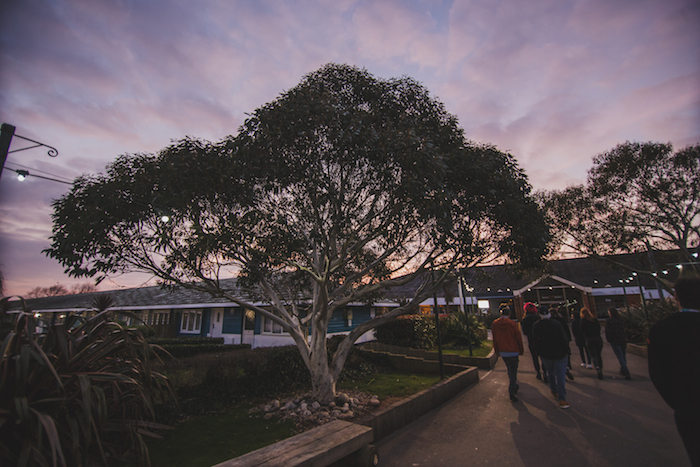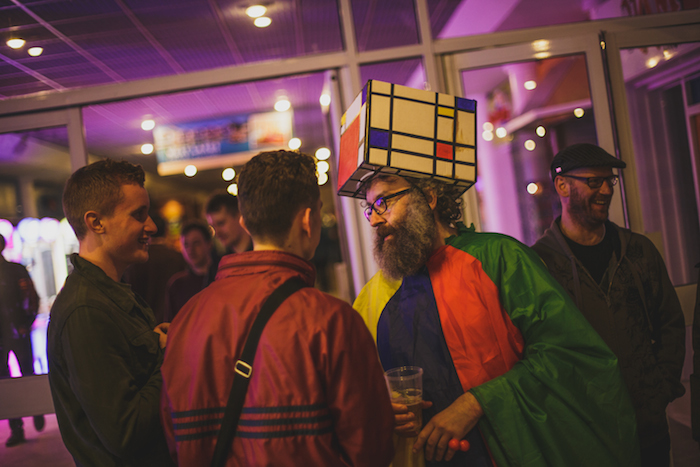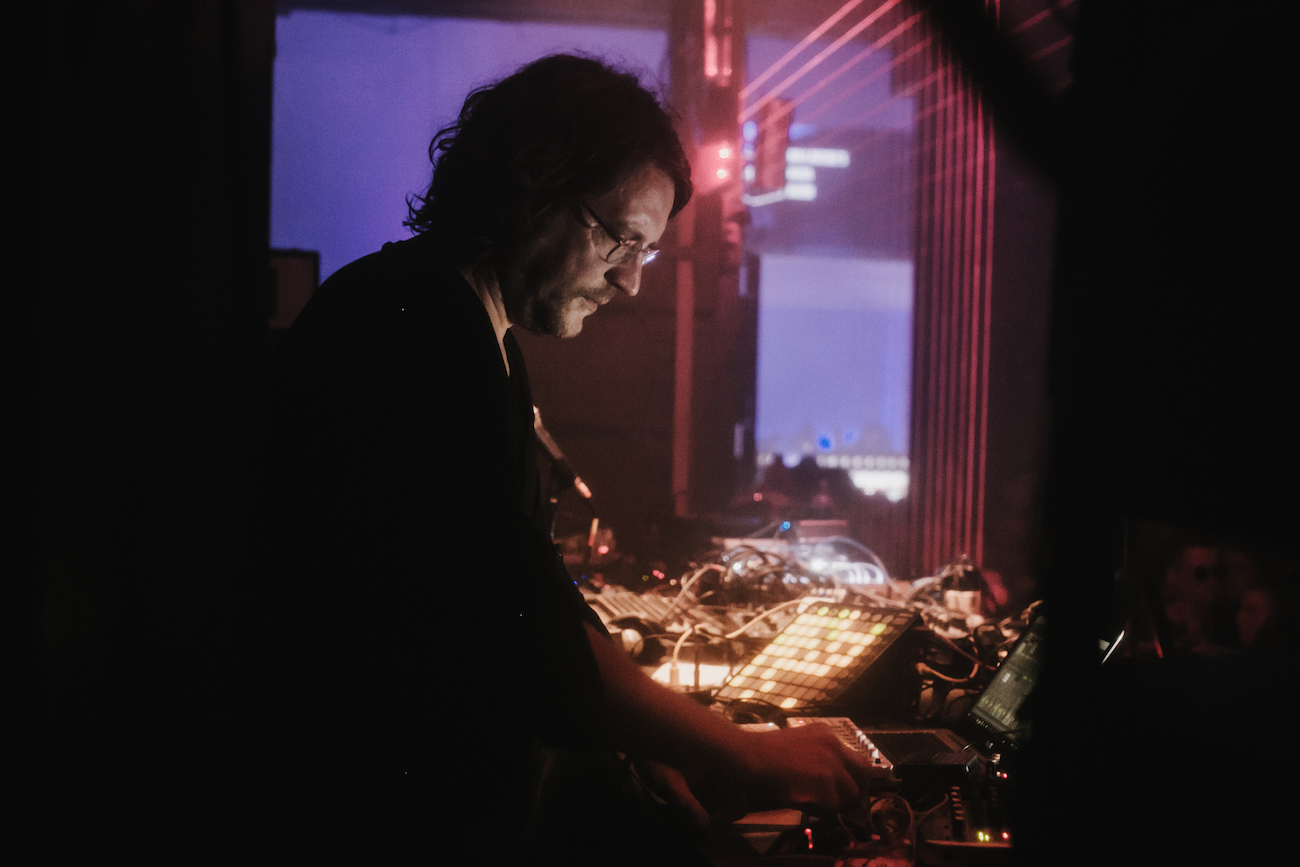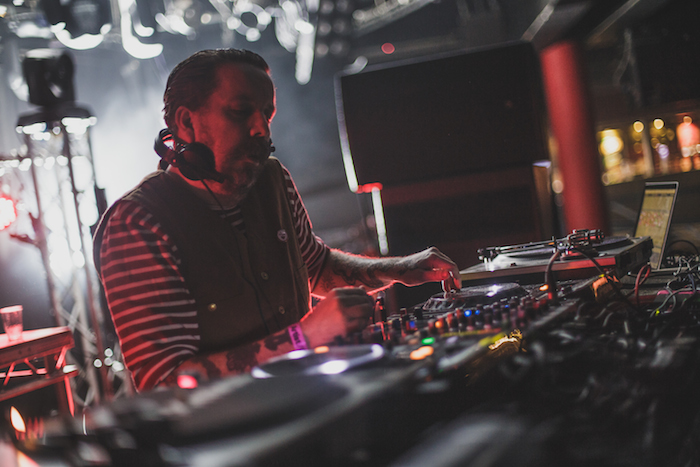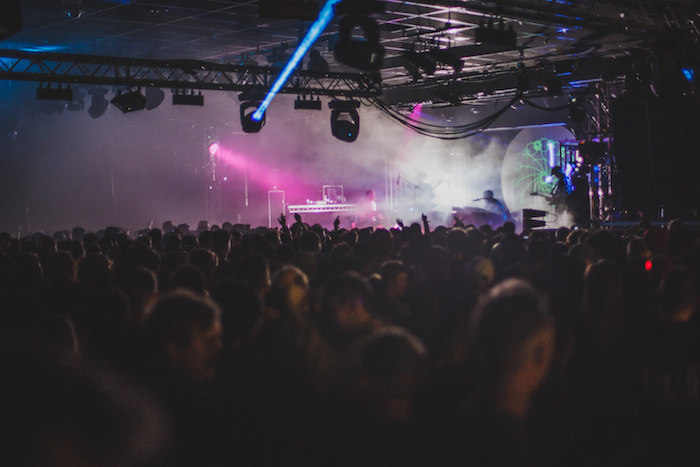Five Takeaways from the Final Bloc Weekender
XLR8R travels to Butlins for Bloc's last ever edition.

After starting out as a small 2,200 capacity electronic music get-together back in 2007, Bloc quickly rose through the ranks to become a key player on the international scene. The brand painted itself as a boundary-pushing electronic music festival from the outset, with Autechre headlining their first ever weekender. Two years on, they moved to their spiritual home at Butlins, in Minehead—a bizarre and magical playground to run wild in.
Bloc quickly became infamous for their exceptional curation and well-up-for-it crowd, finding a niche in an otherwise fairly generic landscape. After a rollercoaster of well-documented ups and downs, it was announced earlier this year that this would be the last ever Bloc weekender. After hearing this news, it suddenly became more essential than ever that I made it down for one last dance.
Bloc 2016 was hard and fast (just how we like it), though as usual ended far too quickly. Among the tear-out sets, the water slides, and the later-than-usual bedtimes, XLR8R pulled together five take-away points from the weekend.
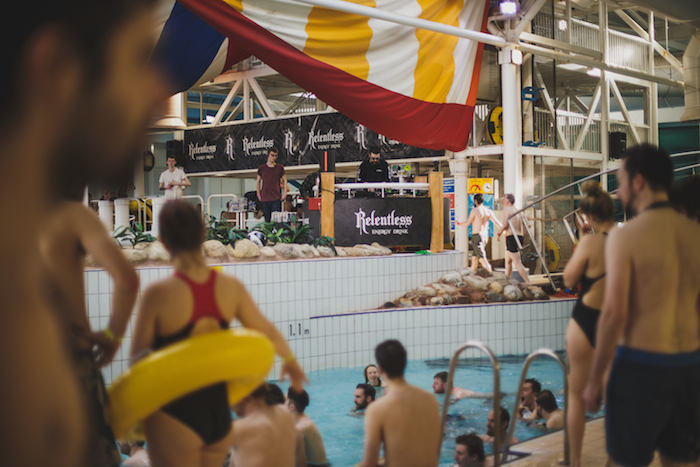
Detroit stole the show, with two outstanding performances from the city’s best
I’m putting it out there now: My two favourite sets from Bloc 2016 were Jeff Mills and Omar-S. While Bloc has a rich history in challenging and forward-thinking bookings, there’s a good reason why Jeff and Omar have had repeated appearances at the festival, and why they were asked to return for Bloc’s last ever weekender.
Catch Jeff Mills on a bad day, and you can be left a bit frustrated and disappointed, but catch him on a good day, and you can expect to have a truly mind-opening experience. Luckily his set on the Saturday night was the latter. On the whole, it was a lot less hectic than what he’s usually capable of, but in place of that there was a powerful sense of purpose and drive to it.
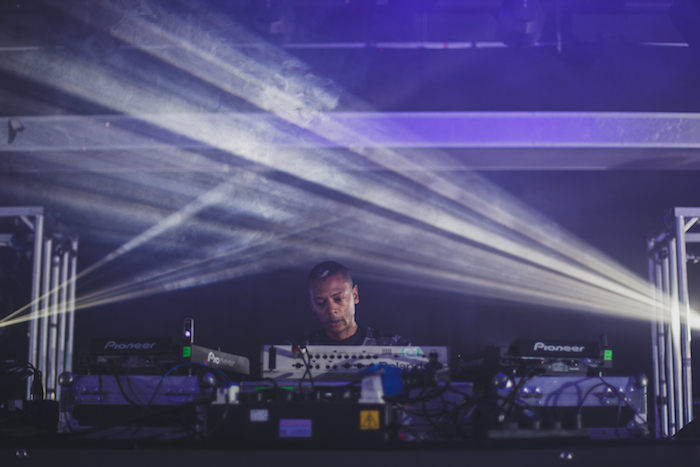
The set was pure, reductive and fluid. Never one to jump around the booth, there’s always an air of calm about him. His static figure would lean over the decks and TR-909 as he listened attentively to the mix, dropping in a new element, subtly EQ-ing, making fine calculated adjustments. Mills is a master of tension and release, and this performance was exemplary of what can really be accomplished in this setting. Highlights have to be the apocalyptic “Spider Formation,” and a live mix of “The Bells” with the drum machine at the end. “Will “The Bells” ever get old?” I heard numerous people ask out loud–the answer is, as it stands, no.
Omar-S delivered the perfect closing set to finish off the weekend, which was nothing short of a masterclass. He took the ever-so-slightly jaded dancefloor through a meandering mix of techno, house, and some excellent soul and disco selections. The core of his set included Omar classics,“S.E.X,” “Set it Out,” and “The Shit Baby,” to name just a few. Variety is largely what‘s missing in a lot of DJ sets these days, and it takes a lot of skill to pull it off, but Omar’s execution was flawless and guided the dancefloor with ease. He took things down with Moby’s “Mobility” and Red 7’s smouldering “I Lost My Shoes On Acid,” before working back up to peak-time selections such as Hawtin’s classic “Spastik” and Mike Dunn’s “God Made Me Phunky” (which caused a riot). Things could have easily carried on for several more hours, but the weekend soon came to a reluctant end as Bloc closed its doors for the last time.
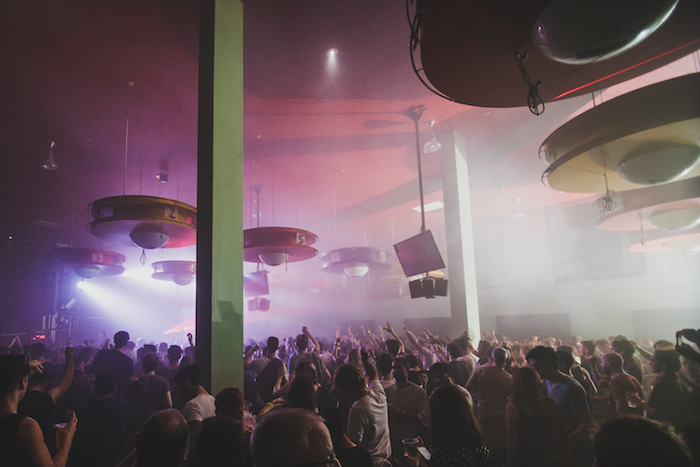
“Lory fuckin’ D”
Lory D is one of those cult figures in the underground world—as a legendary producer responsible for some of the most sought after wax in techno, he’s definitely been someone on my radar for a while now. Stumbling upon an event at which he was recently booked to headline called “The Genius of Lory D” did nothing to diminish my curiosity for the Italian.
The first half of his set was driven by jacking beats–heavy enough to not call it house, but enough hi-hats to make it playful. He alternated between more regular four-to-the-floor and stripped back loops, which were texturally lighter, but still packed a punch, before making it into more grinding acid fusions.
The audience was clearly made up of a majority of Lory D faithfuls, who frequently cheered when Lory would pull out a new dance move. At one point I suddenly heard the crowd chanting, “Lory D, Lory D, Lory Fuckin’ D” over and over; he was loving it, and initiated a breakdown so that the crowd’s acapella could be heard throughout the room. From then on, the “Lory fuckin’ D” chant became a recurring feature of the set. At times there was a rolling groove that served as a refreshing break from the more linear sets heard at other stages, though, by the end I grew a little frustrated by the lack of progression. Maybe I reached the end with unfulfilled expectations, but I definitely left the room with a smile on my face and a spring in my step.
Gender equality is slowly improving, but we (still) need more girl power
Following a spate on Twitter regarding the lack of females on the 2015 Bloc lineup, the discussion about gender equality within dance culture has gained more traction, with several publications speaking out against discriminatory promoters. It was great to see a larger number of female DJs making it on to the line up this year, with many of them turning out some of the most memorable sets of the weekend. From what I saw of Dasha Rush, Helena Hauff, Tama Sumo, and Lakuti, they all smashed it–giving highly impressive performances both technically and musically. There were a number of other women populating the lineup also, but, as people mentioned throughout the weekend, many of them were given rather peripheral time slots.
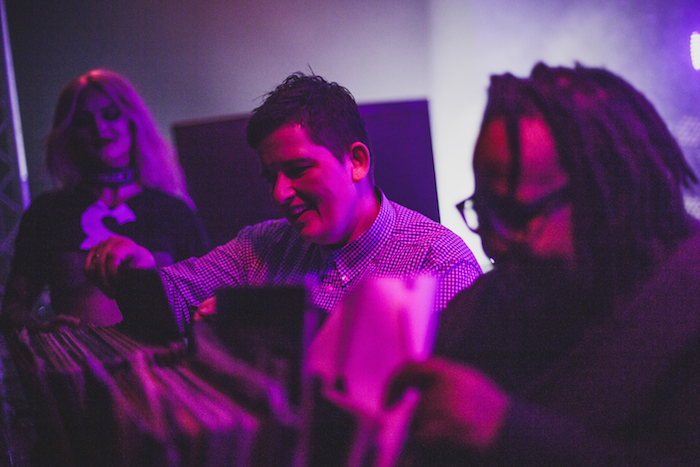
Despite the late Friday finish, I managed to crawl my way over to the panel discussion on Saturday afternoon, which covered the topic of gender equality within the music industry. The panel was made up of a nicely balanced selection of backgrounds—Jane Fitz, Sunil Sharpe, Gabriel Szatan (editor at Boiler Room), Kate Hutchinson (editor at the Guardian), and Shesaid.so’s Sofia Ilyas chairing the discussion.
There were a few conflicts within the panel, with Hutchinson speaking out for the vitality of female support groups, while interestingly Fitz disagreed, arguing that if females desire equality in the industry, they simply need to be “absolutely brilliant” at what they do, and let their work speak for itself: “This isn’t a man’s world. This is an electronic music world.” The subject of positive discrimination was also a discussion point, with both Fitz and Hutchinson expressing their caution at the tokenisation of women. The variety of views just within the females of the group revealed just how problematic and complex the debate is, but also suggested that there may be a number of different ways of going about increasing gender equality.
The session took a few turns and covered a fair amount of ground, but ultimately concluded that firstly, electronic music (and its social and cultural practices) by its nature seems to be less accessible for females, though this isn’t to say that females have less creative ability than males; and second, that more discussions like these need to happen, both on a public platform as well as in living rooms, pubs and Facebook groups. Ultimately it is up to both men and women collectively to address this issue, and hopefully debates such as these will bring the issue of gender equality into a more public domain.
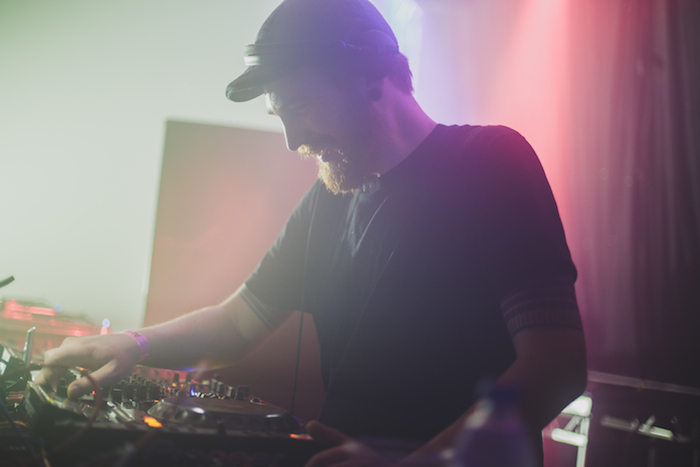
Dystopian Leisure Systems: the soundtrack to the future
Two of the label showcases that stood out for me were the Dystopian takeover at the Carhartt stage, and Leisure System down at Crack. Sadly I’d missed what was apparently an amazingly deep set from Alex.Do, but made it down in time for UK experimental duo Demdike Stare. They played a live set made up of complex cross-rhythms and eerie soundscapes (a la ‘Rathe’). A highly enjoyable blend of noise, punk, broken beat, and bass, they warmed up the evening superbly. By this time the crowd were yearning for some 4/4 action, and ø [Phase] delivered on all fronts, notching things up nicely. Later, Vril laid down an exceptionally powerful performance, with his own “Thronwagen” and “V3” going down a storm, before ending on his emotional Forum classic, “Torus XXXII.”
There’s not much to say about Leisure System other than that they’re a solid and unbelievably consistent brand. This year was no different, with Helena Hauff opening up the stage at 8pm. Despite the fairly early start, she went straight in with her typical EBM-techno fair, working up the crowd with her heavy-handed selections. Her set was almost flawless, dropping some wicked selections like Cute Heels’ chugging “Silence Complot,” and finishing with Privacy’s “Apex Predator.” JoeFarr went in with more relentless techno, and despite a thinner crowd after Hauff had finished, had everyone moving. Later on in the evening, I witnessed a stunning set from Objekt, an effortless and, at times, risky blend of broken beat, breaks and rave, which occasionally flirted with becoming crass, but somehow still fit in convincingly. There were frequent jaunts into spacier territory and Drexciya-type stuff that allowed the crowd a few breathers. It was really great to hear the 2013 hit “Shuttered” on the system, as well as a lot more obscure, wonked-out selections. The set was outstanding for its progression and flow, and had a real sense of narrative to it. Hats off TJ.
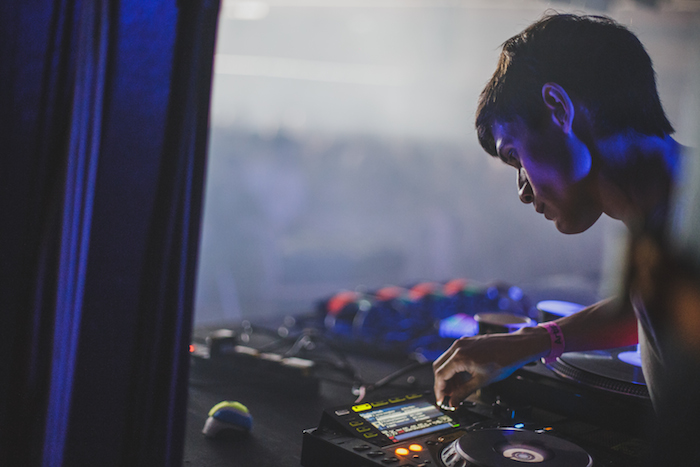
There are a few festivals that do after hours parties, but very few do it as well as Bloc.
I was still glowing from Andy Blake and Joe Hart’s World Unknown takeover from last year (one of those rare and coveted moments of enlightenment), and it was with great anticipation that I returned to Butlins’ infamous Hotshots venue for more afterhours goodness. Both sessions were steered by very capable hands, with London-based collective Gateway To Zen up first, and cult club night Body Hammer on Saturday.
GTZ contended for standout performance on Friday night, only to be rivaled by pretty slick performances from both Ben UFO and the other Ben (Klock). Opened by Nick Craddock, each of GTZ’s residents went one after the other, displaying an individual flair and flow that was impressive. There were some great selections throughout, with tracks like Pearson Sound’s “Freeze Cycle” amongst plenty of R&S style classics. Despite it being 9am, it was agonizing to tear myself away to go and get some sleep.
Body Hammer went in with a truly eclectic bag, oscillating frenetically between heads down techno (Basic Channel’s “Q1.1/1” comes to mind), disco, rave, and banging tech-house. The pair alternated through periods of light and dark, and dropped some big hitters to the tune of “Strings Of Life,” and Kenny Jason’s “Can U Dance.”

All good things must come to an end:
There’s always a tinge of melancholy during the last few hours of a festival, as people come to the acceptance that the weekend’s fun is almost up. With the prospect of Monday, work, and reality just over the horizon, it was all the more depressing to think that Bloc would not be returning to Butlins for another weekend of excess and hedonism. As has been repeatedly preached, Butlins as a site for a four-day rave is simply perfect, and coupled with excellent music programming, has become over the years one of the most highly anticipated weekenders, not just in the UK but in Europe.
However, as this chapter draws to a close, the brand looks to the future, with Bloc founders Alex Benson and George Hull turning their sights on their London HQ. While there will be a gaping hole in the UK festival circuit, we can be sure to hear from Bloc soon, via their record label and new East London superclub venture.
All photos: Jake Davis
